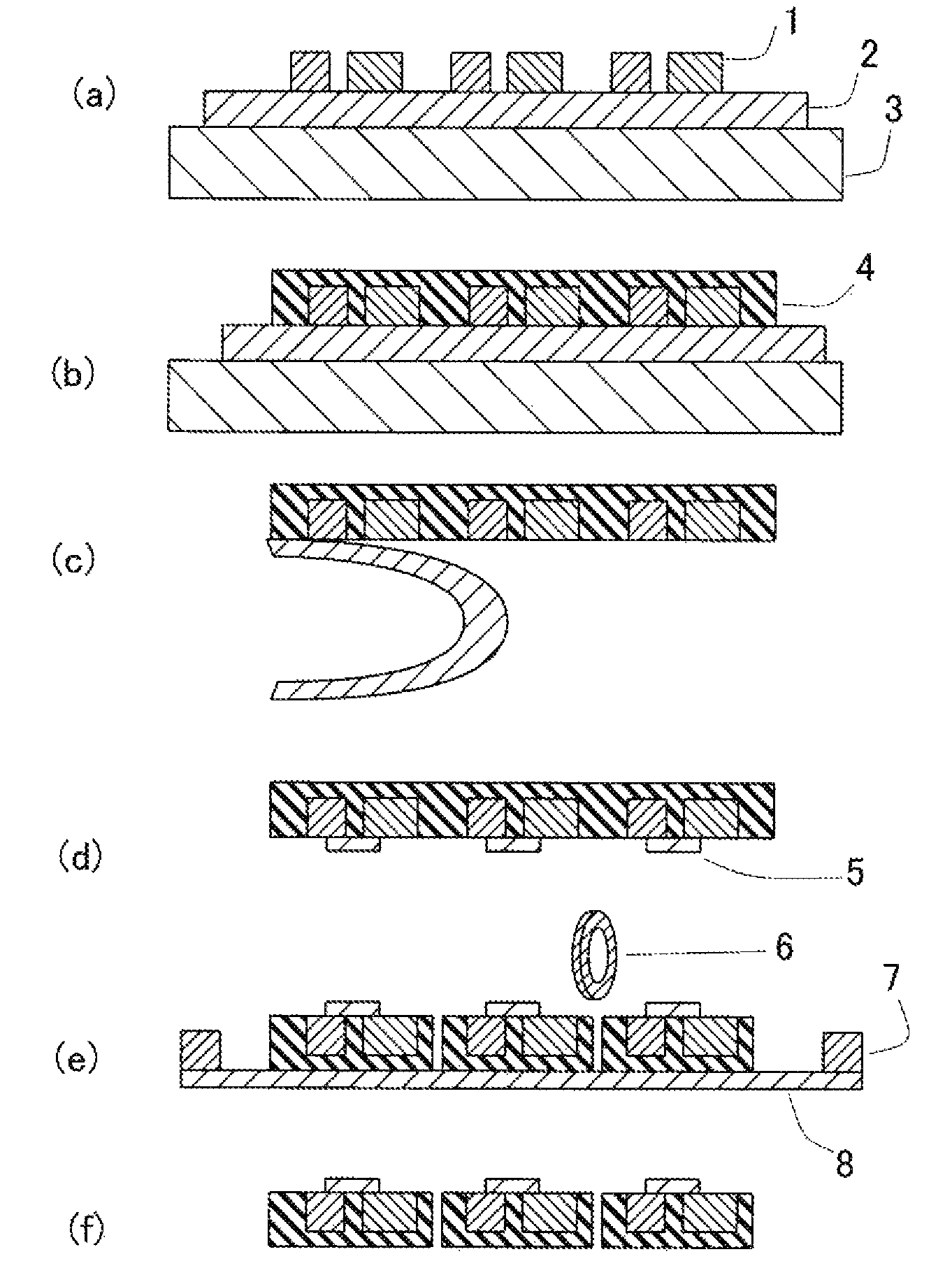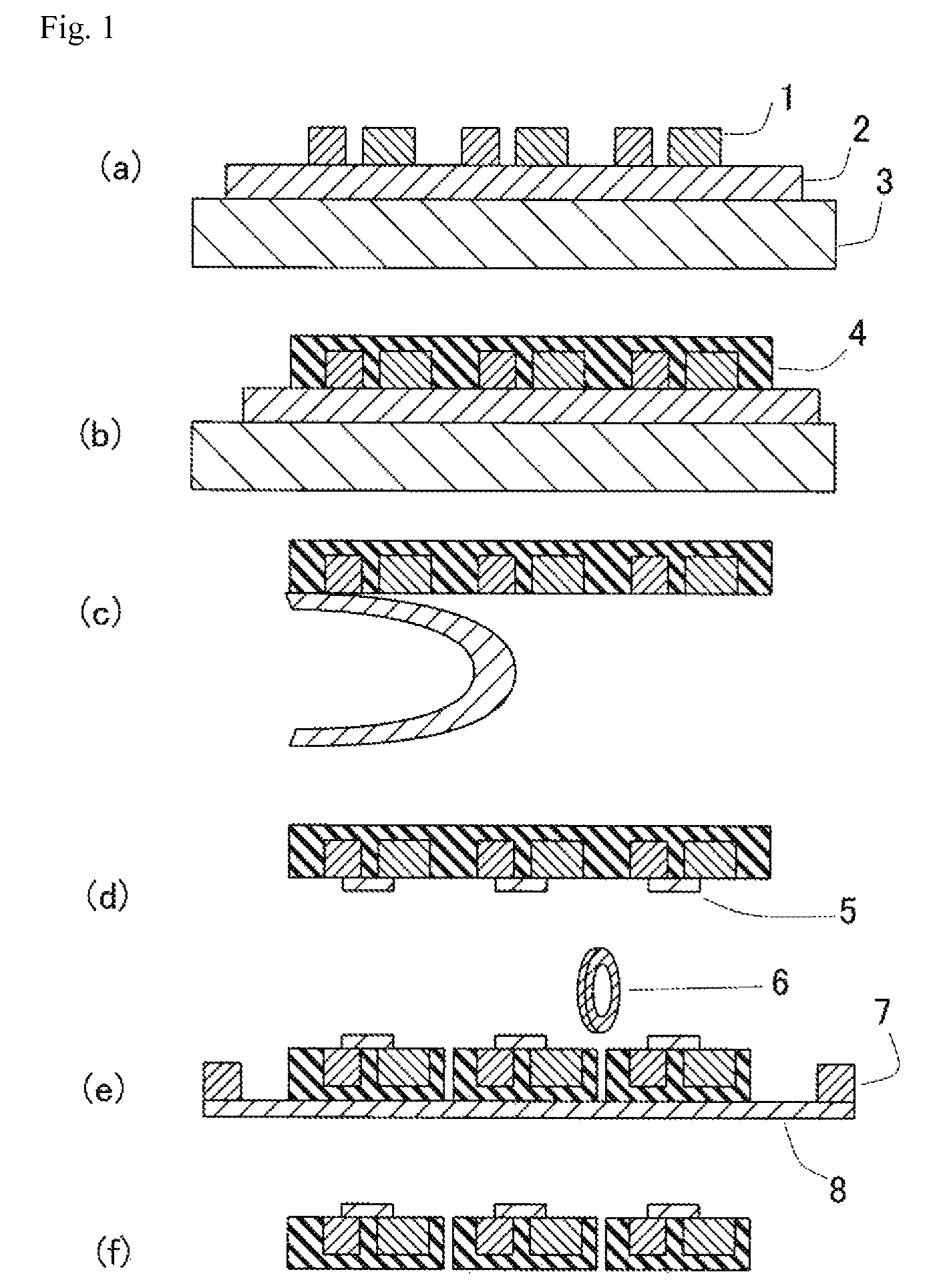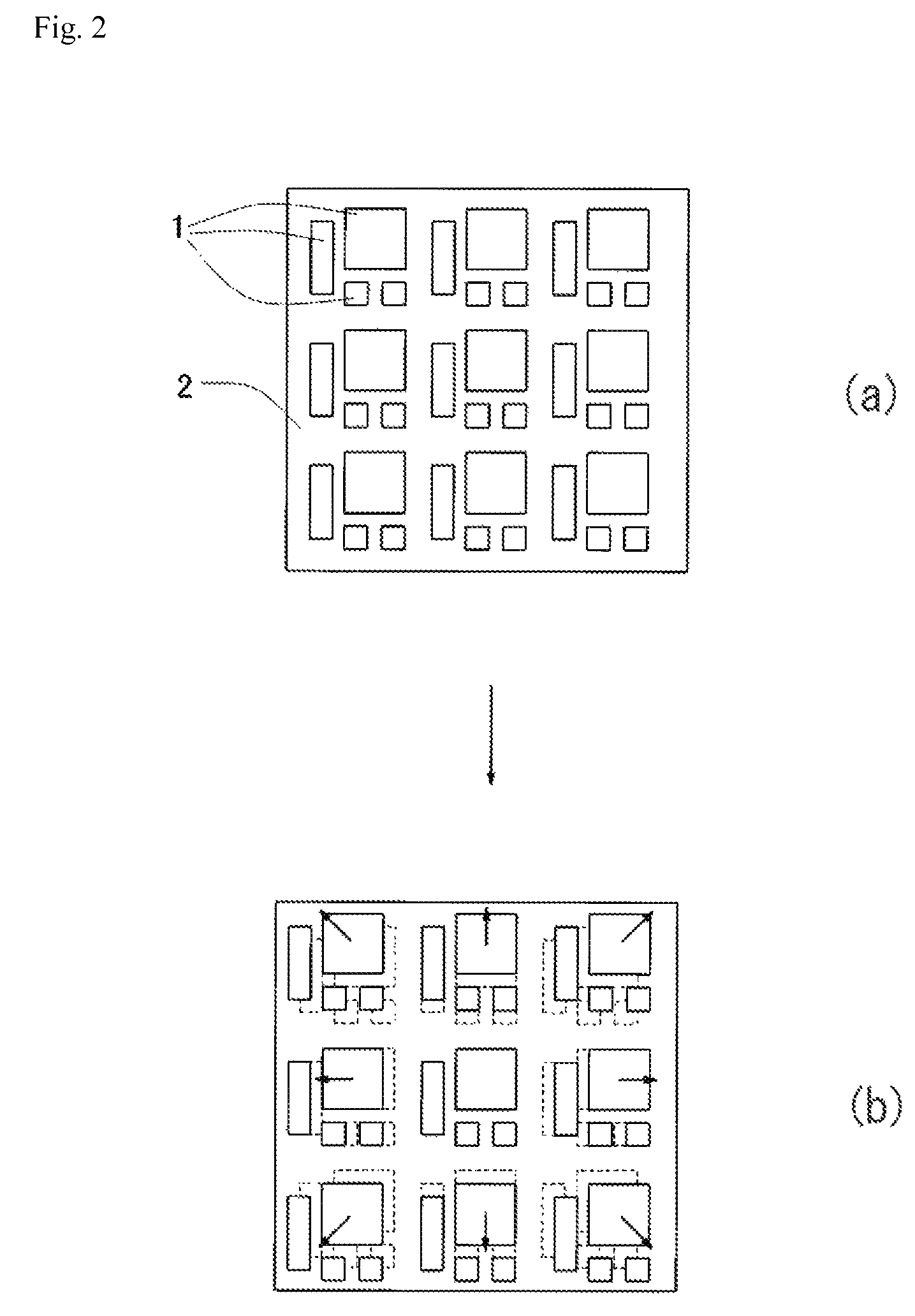Heat-resistant adhesive sheet for substrateless semiconductor package fabrication and method for fabricating substrateless semiconductor package using the adhesive sheet
a technology of adhesive sheet and substrateless semiconductor, which is applied in the directions of transportation and packaging, layered products, chemistry apparatus and processes, etc., can solve the problems of difficult peeling off of the adhesive sheet, the method is not intended for substrateless semiconductor devices, and the subsequent electrode formation step is not smooth, so as to improve the fabrication yield of the semiconductor package and reduce contamination
- Summary
- Abstract
- Description
- Claims
- Application Information
AI Technical Summary
Benefits of technology
Problems solved by technology
Method used
Image
Examples
working examples
[Measuring Method]
[0104]Measurements and evaluations in working examples and comparative examples were made as follows.
[0105]Initial adhesion strength to SUS: Peel adhesion strength to a SUS304BA plate at an angle of 180° at room temperature
[0106]Adhesion strength to SUS304 after heating: Peel adhesion strength at an angle of 180° after attached to a SUS304BA plate and heated at 150° C. for 60 minutes
[0107]Adhesion strength to SUS304 at 175° C.: Peel adhesion strength to a SUS304BA plate at 175° C.
[0108]Peel strength from package: Peel adhesion strength at an angle of 180° when the adhesive sheet is peeled from the package
[0109]Chip displacement: Displacement from the initial position of a chip measured with a digital microscope after package fabrication
[0110]Adhesive deposit: The surface of the package was visually checked for adhesive deposits after the adhesive sheet was peeled off.
[0111]The term “part” in the following description means “part by weight”.
working example 1
[0112]3 pts.wt. of acrylic acid monomer as a component monomer was blended with 100 pts.wt. of butyl acrylate monomer to derive an acrylic-based copolymer. 3 pts.wt. of an epoxy-based cross-linking agent (Tetrad-C from Mitsubishi Gas Chemical Company, Inc.) and 5 pts.wt. of an isocyanate-based cross-linking agent (Coronate L from Nippon Polyurethane Industry Co., Ltd.) were blended with 100 pts.wt. of the acrylic-based copolymer to prepare an acrylic-based adhesive. 50 pts.wt. of a UV curable compound (UV-1700B from Nippon Synthetic Chemical Industry Co., Ltd.) and 3 pts.wt. of UV curing initiator (Irgacure 651 from NAGASE & CO., LTD.) were added to the acrylic-based adhesive to prepare an adhesive composition.
[0113]Then, the adhesive composition was applied to a 25-μm-thick polyimide film (Kapton 100H from Du Pont-Toray Co., Ltd.) serving as the base material layer, and then dried to prepare a heat-resistant adhesive sheet for semiconductor device fabrication with an adhesive layer...
working example 2
[0125]42 parts of acrylonitrile-butadiene rubber (Nipol 1072) from Zeon Corporation), 53 parts of bisphenol A-type epoxy resin (Epikote 828 from Japan Epoxy Resin Co., Ltd., with a weight per epoxy equivalent of 190 g / eq), and 5 parts of imidazole (C1 1Z from Shikoku Chemicals Corporation) were blended and dissolved in an MEK solvent to a concentration of 35 wt % to prepare a bond solution. The bond solution was applied to a 35-μm-thick copper foil serving as a base material film, and was then dried at 150° C. for 3 minutes to form a bond layer having a bond thickness of 10 μm, thus forming a heat-resistant adhesive sheet for semiconductor device fabrication.
[0126]A 3 mm×3 mm Si wafer chip was placed on the heat-resistant adhesive sheet for semiconductor device fabrication, epoxy-based encapsulation resin powder (GE-740LA from Nitto Denko Corporation) was sprinkled over the sheet and the wafer chip, and then molded by heating at a temperature of 175° C. under a pressure of 3.0 kg / cm...
PUM
| Property | Measurement | Unit |
|---|---|---|
| peel strength | aaaaa | aaaaa |
| adhesion strength | aaaaa | aaaaa |
| peel strength | aaaaa | aaaaa |
Abstract
Description
Claims
Application Information
 Login to View More
Login to View More - R&D
- Intellectual Property
- Life Sciences
- Materials
- Tech Scout
- Unparalleled Data Quality
- Higher Quality Content
- 60% Fewer Hallucinations
Browse by: Latest US Patents, China's latest patents, Technical Efficacy Thesaurus, Application Domain, Technology Topic, Popular Technical Reports.
© 2025 PatSnap. All rights reserved.Legal|Privacy policy|Modern Slavery Act Transparency Statement|Sitemap|About US| Contact US: help@patsnap.com



